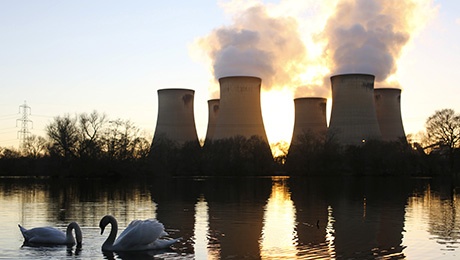
In early August, CaixaBank, Spain’s third-largest lender, made a purchase that looks positively nostalgic: voluntary carbon credits to offset its greenhouse gas emissions.
The credits, validated by the Clean Development Mechanism (CDM) established in the Kyoto Protocol and now overseen by the United Nations Framework Convention on Climate Change (UNFCCC), were generated from a wind farm and a natural-gas plant in Colombia. They’re meant to offset the 658 metric tons of carbon that Barcelona-based CaixaBank produced through its power use, water consumption, waste management and employee travel last year.
对于那些寻求减少碳足迹的公司来说,近年来碳补偿已经不再受欢迎。这与2006的差距很大,“碳中和的”是新牛津美语词典演员莱昂纳多·迪卡普里奥、滚石乐队和媒体大亨鲁伯特·默多克自夸地登上了这股潮流。谷歌承诺在2007年进入碳中和的道路,沃尔特迪士尼公司两年后宣布了同样的承诺,通用汽车公司2010也跟着跟进。
Is the CaixaBank purchase a quaint throwback or a sign of more activity to come? Advocates remain hopeful that carbon offsets will soon see a resurgence. Others say corporate clean energy initiatives are increasingly skipping carbon offsets — and that this trend is a good thing.
在全球金融危机破坏了有关在美国建立强制性碳市场框架的谈判之后,碳补偿开始失去其光芒。此外,2009年哥本哈根联合国气候变化会议(联合国气候变化框架公约缔约方会议)未能就具有约束力的国际市场达成协议,这分散了许多潜在的自愿抵消买家的注意力,并使他们失望(另见气候变化和多年的危险投资”).
休·希利,圣乔治Grenada-based主席an of the CDM’s executive board, says a new global carbon agreement at the next U.N. Climate Change Conference, scheduled for December 2015 in Paris, could throw carbon offsets back into the limelight. Don’t bet on it, counters Brian Jones, a Concord, Massachusetts–based senior vice president at environmental consulting firm M.J. Bradley & Associates. “I feel like offsets had their day, and if they were going to take off, we needed a carbon market [in the U.S.],” Jones says. “It’s almost like the dialogue has moved beyond them.”
有证据支持这一观点。根据总部位于华盛顿特区的环境非营利组织森林趋势研究项目生态系统市场的数据,2013年自愿碳市场的全球价值仅为3.79亿美元。这比2008年的7.89亿美元峰值下降了52%。2008年,生态系统市场开始发布年度市场报告。
该倡议大幅降低了其增长预测:去年的报告指出,自愿碳市场到2020年可能达到16亿至23亿美元,而2014 publication将预测削减至9亿至18亿美元。
生态系统市场碳计划的合伙人、2014年报告的合著者艾莉·戈尔茨坦(Allie Goldstein)说,较小的数字反映了一个事实,即“人们对市场现在的位置变得更加现实”。她补充说,2013年,清洁能源开发商对其项目产生的自愿信贷的需求继续受到抑制。
抵消购买:2013年自愿碳抵消市场份额(按买家动机)

这些公司已经不再碳中和,作为维护绿色证书的一种方式。M.J.布拉德利的琼斯说:“企业在气候变化风险方面变得越来越聪明,他们在内部也做得更多。”。他解释说,企业并没有达到补偿的目的,而是在控制温室气体排放,并向公众报告进展情况投资者以及CDP(以前的碳披露项目)等碳披露组织。琼斯说:“他们看到了这些举措的成本效益,它们提供了底线效益。”。“在我看来,补偿实际上是作为最后手段设计的”(另请参见)为什么投资者应该关心气候变化”).
Tanya Weekes,纽约证券交易所的投资组合经理气候变化之都,a London-based asset manager that helps develop clean energy projects and sells the resulting carbon offsets to corporate and government buyers, notes that her firm has seen the supply of voluntary offsets far outstrip demand during the past few years. “You can still usually sell them at a profit, just not enough of a profit to create a new business around it,” Weekes says.
然而,联合国仍在通过清洁发展机制推动自愿补偿,可能是因为它在该机制中投入了时间和资源,这有助于其核证的减排(CER)补偿的销售和交易。联合国气候变化框架公约(UNFCCC)的气候中性运动于7月启动,呼吁联合国工作人员及其家属自愿购买CER,以补偿其排放。最终,这项运动将扩大,以参与碳中和的公司和地区和公民政府。
Adam Bumpus, an assistant professor of environment and development at the University of Melbourne, agrees with the CDM’s Sealy that the upcoming Paris discussions might be a turning point for carbon offsets. “I’m virtually positive there will be a global agreement on climate change with legally binding targets, including a new market mechanism,” he says. “That could really invigorate this market.”
